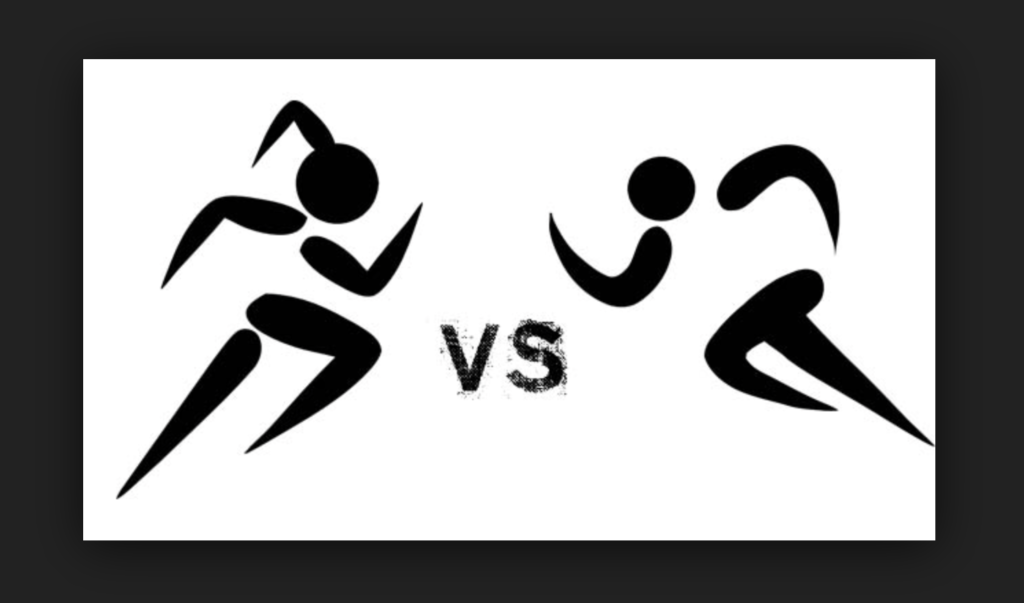
Differences in dealing with male & female athletes
By Carol Linden
Considering coaches and communication I’d like to answer two questions today:
- Is there a difference between coaching boys vs coaching girls?
- How about the whole yelling thing?
Differences between coaching boys vs. girls: Coach Dorrance’s Story
I can talk theoretically about the one psychological type preference that does have a gender connection. But first, I’d like to talk about a fascinating talk given by Anson Dorrance at the Carolina Theater in Durham, NC, around 2000. He is the most winning women’s soccer coach by far. The closest coach in the “most winning soccer coaches” list is about 240 wins behind him. As of the end of 2016, he had 867 wins. I think that by any measure, he is a coach whose record and hard-earned wisdom is worth listening to.
He told a fascinating story about coming to University of North Carolina to coach men’s soccer in 1979. He was told, “Oh, by the way, you’ll also be coaching the women’s team.” Coach Dorrance thought at the time, “I have no idea how to coach women.” So, he was thrown into the deep end of the pool and experienced true on-the-job learning. I say “learning” instead of “training” because no one was available to teach him anything about coaching women’s soccer. He was truly on his own, sink or swim. (He’s a soccer coach; am I mixing my metaphors here? ;- )
At one point, he hired a new trainer for the men’s team and the new method was helping them. So, he thought logically, let’s share this trainer with the women’s team now that it’s been proven effective with the men. He brought the trainer in, and it was a disaster. The women’s team fell apart. Everything they had going for them went up in a puff of smoke. He had no way of understanding this, but it was happening right in front of his eyes, so he had to do something about it. He pulled the trainer from the women’s practice session and let them go back to what they had been doing.
Then he watched. As they warmed up, the women athletes gathered in small groups of 2 or 3. They talked quietly but were obviously interacting as they warmed up. Their performance level went right back to the success they had achieved before.
How to make sense of this? Coach Dorrance observed in real time something that now there’s real data about. He realized there was bonding going on for the women and that without that opportunity, they did not perform well together. Something about their performance process was different than men’s. He responded as a good coach does–he used what worked for the athletes, even though he didn’t have a complete understanding of why different techniques got such different results for men and women.
Personally, I’m not a coach, but I’d take advice from Coach Dorrance if I coached women. Let them bond at the beginning of the practice session. That obviously works for women athletes.
Possible Psychological Implications
In the world of Psychological Type, we do not discuss type and behavior in terms of causality. People are too complex for that. People are far more than their psychological type preferences. That said, we can talk about the data and about correlations we’re seeing.
For example, how I would make sense of what Coach Dorrance observed and reported on in a real coaching situation is to apply what I know about the data on men and women and psychological type preferences. Only one of the four pairs of preferences measured in Psychological Type has a clear gender difference. And, no, it’s not introversion and extraversion, which most people guess at first.
The difference is in the preference between the two Feeling Judging functions and the two Thinking Judging functions. Now, I’m not talking about emotions here. I’m talking about preferences in how decisions are being made.
Feeling Judging Functions:
Someone with a preference for one of the Feeling functions for making decisions either considers the impact on other people or the correlation between their internal values and the decision that needs to be made.
Thinking Judging Functions:
Someone with a preference of one of the two Thinking functions for making decisions uses analytical reasoning in one of two ways: analytical reasoning in the service of how to execute a plan or analytical reasoning in the service of deeply understanding the problem at hand.
Now, remember that we all have access to all four of these judging functions. We just tend to have a preference and use one more than the others. Sometimes, we rely on mainly our favorite one even when it would help us to use a different one in different situations. That’s our preference showing.
Men and Women: How do women and men differ here? Quite clearly in the data. About 60% of women prefer one of the Feeling functions and about 60% of men prefer one of the Thinking functions. That obviously also says that 40% of each gender prefers the other.
These very real differences show up clearly in our cultural biases. Analytical women who are outspoken are often called “bossy.” Analytical men who act like that are praised and thought of as manly or as “real leaders.”
On the other hand, the bias runs the other way too. “Boys don’t cry,” our students and sons are often told. Boys with a Feeling preference are taught early in our American culture to hide what is perceived as being soft-hearted. They are often shamed for it. This behavior toward boys (and men for that matter) is not fair, and it’s really damaging. To both genders, forcing these cultural biases on them are damaging. At the deepest level, it teaches our students and children that it’s not ok to be who they are or to feel what they feel or think what they think or speak out or show soft-heartedness.
I would hope that we’ve gotten to the place in our cultural development that we can, for the sake of our students and children, recognize these biases for the damaging attitudes that they are. We need to allow women with an analytical preference to be who they are and to allow men with a feeling-judging preference to be who they are. By our tolerance of differences, we can create a healthier and more affirming environment for our students and for their future.


Carol A. Linden
Effective With People, LLC
“playing well with others is good business”
919 599-9301
The JOB SEEKERS GUIDE for Extraverts and Introverts
is available on Amazon now, paperback and Kindle.
